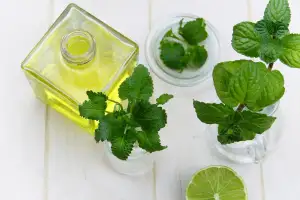Revive Your Rusty Cast Iron: Easy and Effective Tips to Clean and Restore

Cast iron cookware has been a staple in kitchens for centuries, known for its durability and ability to evenly distribute heat. However, over time, cast iron can develop rust, which not only affects its appearance but also compromises its functionality. Cleaning rusty cast iron is essential to restore its beauty and ensure it remains a reliable cooking companion. In this article, we will explore easy and effective tips to clean and restore your rusty cast iron, allowing you to enjoy its benefits for years to come.
Gather the necessary supplies for cleaning
To effectively clean and restore your rusty cast iron, it's important to gather the necessary supplies beforehand. Here's a list of items you'll need:
1. Scrub brush or sponge: Look for a brush or sponge specifically designed for cast iron cleaning. Avoid using abrasive materials that can damage the surface.
2. Fine-grit sandpaper: This will come in handy for removing stubborn rust spots. Opt for a fine-grit sandpaper to avoid scratching the cast iron.
3. White vinegar: Vinegar is a natural acid that helps dissolve rust. Make sure to have enough on hand to soak your cast iron if needed.
4. Baking soda: This versatile ingredient acts as a gentle abrasive and can help remove light rust stains.
5. Lemon juice: The acidity in lemon juice can also aid in rust removal and add a fresh scent to your cleaning process.
6. Commercial rust remover (optional): If natural methods don't fully remove the rust, consider using a commercial rust remover product available at most hardware stores.
By having these supplies ready, you'll be well-prepared to tackle the task of cleaning and restoring your beloved cast iron cookware.
Preparing the cast iron for cleaning
Before diving into the process of cleaning rusty cast iron, it is essential to prepare the cookware properly. Start by removing any food residue or stuck-on debris using a stiff brush or scraper. If necessary, you can also use hot water and mild dish soap to loosen stubborn bits. Once the surface is free from food particles, rinse the cast iron thoroughly with warm water and pat it dry with a clean towel. Make sure to remove all moisture to prevent further rusting during the cleaning process.
Removing rust using natural ingredients
Removing rust using natural ingredients is a safe and effective way to restore your rusty cast iron. One popular method involves creating a paste by mixing equal parts baking soda and water. Apply the paste to the rusted areas and let it sit for a few hours. Then, scrub the surface with a brush or sponge to remove the loosened rust. Another natural option is to use vinegar. Soak your cast iron in a mixture of equal parts vinegar and water for several hours or overnight. The acidity of the vinegar helps dissolve the rust, making it easier to scrub away. Remember to rinse and dry your cast iron thoroughly after using these natural remedies.
Using commercial rust removers for stubborn rust
Using commercial rust removers is an effective option for dealing with stubborn rust on your cast iron. These products are specifically designed to dissolve rust and restore the surface of your cookware. When choosing a commercial rust remover, look for one that is safe to use on cast iron and follow the manufacturer's instructions carefully. Apply the rust remover to the affected areas and let it sit for the recommended amount of time. Then, use a scrub brush or sponge to gently remove the loosened rust. Rinse the cast iron thoroughly with water and dry it completely before moving on to the next step in the cleaning process. Remember, always wear gloves and work in a well-ventilated area when using commercial rust removers.
Scrubbing and cleaning the cast iron
Once you have removed the rust from your cast iron, it's time to give it a thorough scrubbing and cleaning. Start by using a stiff brush or sponge to scrub away any remaining rust particles. Make sure to scrub both the inside and outside of the cast iron.
Next, fill a sink or basin with warm water and add a small amount of dish soap. Use a non-abrasive sponge or cloth to gently scrub the cast iron, removing any dirt or residue that may be present. Avoid using harsh chemicals or abrasive cleaners, as they can damage the seasoning of the cast iron.
For stubborn stains or stuck-on food, you can create a paste using equal parts baking soda and water. Apply this paste to the affected areas and let it sit for a few minutes before scrubbing it away with a sponge or brush.
Once you are satisfied with the cleanliness of your cast iron, rinse it thoroughly under running water to remove any soap residue. Make sure to dry it completely using a towel or by placing it in an oven set at low heat for a few minutes.
Remember, never soak your cast iron in water for extended periods as this can lead to rust formation. Instead, clean it immediately after each use and dry it thoroughly before storing.
By following these steps, you can ensure that your cast iron stays clean and free from rust for years to come.
Drying and seasoning the cast iron
After cleaning your cast iron, it is crucial to dry it thoroughly to prevent any moisture from causing rust again. Start by using a clean towel or paper towels to remove any excess water. Then, place the cast iron on a stovetop burner set to low heat for a few minutes. This will help evaporate any remaining moisture.
Once the cast iron is completely dry, it's time to season it. Seasoning creates a protective layer that prevents rust and enhances the non-stick properties of the cast iron. To season, apply a thin layer of vegetable oil or flaxseed oil all over the surface of the cast iron, including the handle and exterior.
Next, preheat your oven to 350°F (175°C). Place the cast iron upside down on the middle rack of the oven with a baking sheet or aluminum foil placed on the bottom rack to catch any drips. Bake for one hour.
After an hour, turn off the oven and let the cast iron cool inside before removing it. The heat from the oven helps bond the oil to the surface of the cast iron, creating a durable seasoning layer.
Remember that seasoning is an ongoing process. Each time you cook with your cast iron, you are adding another layer of seasoning. Over time, this will result in a beautiful black patina that enhances both flavor and cooking performance.
By properly drying and seasoning your cast iron after cleaning, you can ensure its longevity and enjoy cooking with it for years to come
Storing and maintaining the cast iron
Storing and maintaining your cast iron properly is crucial to keep it rust-free and in good condition for years to come. After cleaning and seasoning, make sure the cast iron is completely dry to prevent any moisture from causing rust. Store it in a cool, dry place with a lid or cover to protect it from dust and humidity. Avoid stacking other heavy objects on top of it to prevent any damage. Regularly inspect your cast iron for any signs of rust or wear, and if needed, repeat the cleaning and seasoning process. With proper care, your cast iron will continue to be a reliable tool in your kitchen arsenal.
In conclusion, by following these easy and effective tips to clean and restore your rusty cast iron, you can enjoy a rust-free cooking experience for years to come. Regular maintenance and proper care will ensure that your cast iron remains in top condition. Remember to always dry and season your cast iron after each use, and store it in a cool, dry place. With a little effort, you can revive your rusty cast iron and continue to create delicious meals with confidence. So go ahead, dust off that old pan and get cooking!
Published: 09. 12. 2023
Category: Home



